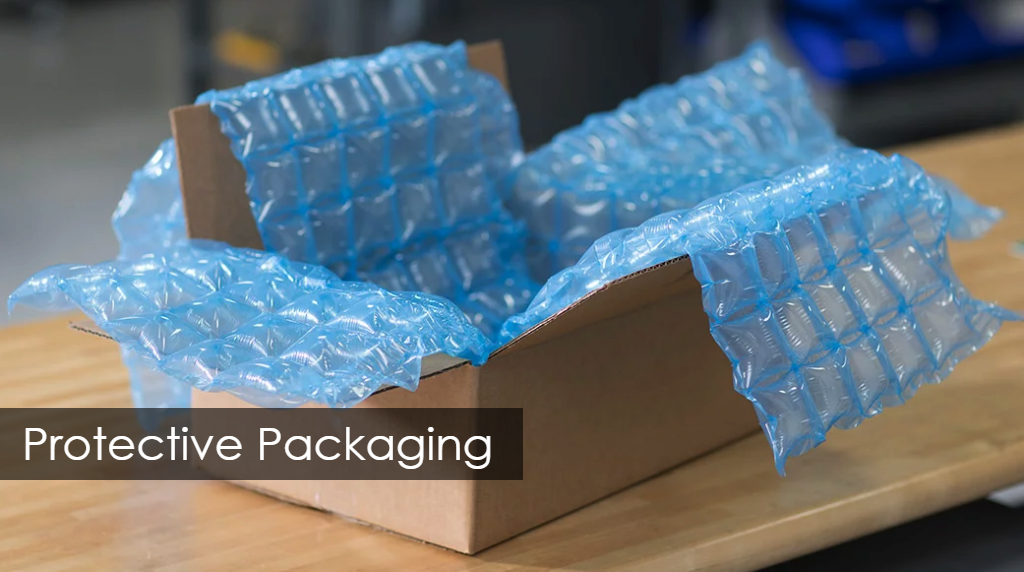Traditional To Contemporary- The Journey of Protective Packaging
admin admin | Jan 17, 2019

Digitalization is shaping businesses/industries all across the globe and packaging is no exception. Until now the industry, in particular, has been running on a set of business models but as of now, some major changes have been observed over time.
At present, the impact of digitalization can be found in almost everywhere from businesses to individuals. In fact, technology these days knows so much about us. Smart homes operate based on behavioral patterns, it recommends purchases and so on. Now while buying products online, it could be subject to dropping, rough handling and movement from vehicles. As a result, the role of Protective packaging solutions is widening as their utility is pervading multiple aspects of our day to day lives. Starting from everyday household items purchased online to high-value products like electrical and computer components leaving no possibility of damaging the product behind. Packing peanuts, cardboard boxes, padded divider sets, bubble wraps, packing foam, packing paper are some of best examples to consider when it comes to protective packaging supplies.
Traditional Protective Packaging
Earlier,
Protective packaging products have been in use since the creation of Kraft paper packaging in the late 1800’s. Of course, such recyclable methods are still in use. In the year 1954, Polyurethane foam became widely available for commercial use. As a result, it gave rise to foam packaging peanuts in 1962. During the same time, Sealed Air created Bubble Wrap. Originally intended to become a wallpaper, the accidental creation became a grand success. And since then, there was no looking back, protective packaging industry continued to evolve as manufacturers develop more efficient and environmentally friendly solutions to meet consumer demands.
And now,
Fortunately, many traditional methods of protective packaging are still in use today. These methods are pretty much business adaptable, all-purpose packaging solutions that can be used for different package types. Some of them include:
- Inflated Bubble Packaging- Being one of the most popular and versatile packaging product, bubble wraps provide a great amount of cushioning and protection. Available in multiple configurations and varying grades, the packaging material has the potential to adjust in terms of shape and size. Larger bubbles offer more protection while stronger materials ensure heavy products will not pop the bubbles prematurely.
- Kraft Paper- Being environmentally friendly, recyclable and compostable void, Kraft papers turns out to be an on-demand type packaging system which is highly used by packers to create a ball, roper or brace.
- Foam Packaging- Packing peanuts or foam peanuts have been in use for around a decade and used in several packaging formats. This is what we call loose fill protection and they are quite environment-friendly which do not hold a static charge.
- Angleboard and Edge Protectors- Specifically designed product which helps to prevent damage during the stretch wrapping or banding process.
Contemporary Protective Packaging
The increasing evolution of businesses resulted in the increase in production rates. Several companies found themselves looking around for improvements over standard packaging leading themselves to develop machines to increase efficiency and optimize resources. Automated protective packaging equipments have become pretty important these days. Improved labor efficiency, maximum material use, reduce waste, maximize floor space are some of the crucial advantages offered by such packaging. Contemporary protective packaging has given businesses the ability to increase their packaging speeds by streamlining the packaging process for high volumes.
- Kraft Paper Packaging Machines- The conventional method of using Kraft packaging seemed to be quite time-consuming. As a result, modern kraft paper packaging machines use the same base material but are able to produce a consistent bracing material.
- Bubble on-Demand- Storage space used by traditional rolls of pre-filled bubble packaging is quite reduced with these products. As the film passes through the machine, air is blown between the layers to fill the bubble. In addition to this, on-demand bubble systems dispense sheeting in such a manner eliminating the labor required to trim large sheets down to size.
- Foam-In-Place Packaging- Unlike bubble on demand, they use liquid components that combine and cause rapid expansion and hardening. As the foam rises it fills any void spaces creating a protective shell. I personally find this as one of the most versatile packaging solutions available in the market today. Foam-in-Place systems are optimal for packaging products that are very fragile or very heavy that require bracing for transport.
So that’s all for now! Keep watching the space to know more about protective packaging materials later in the day!







